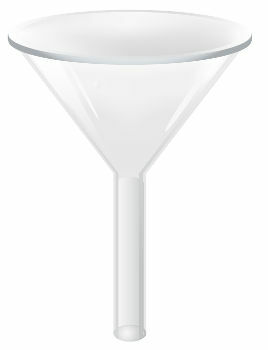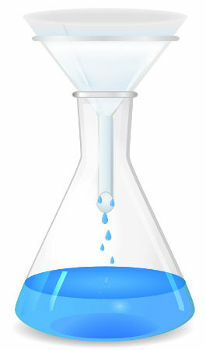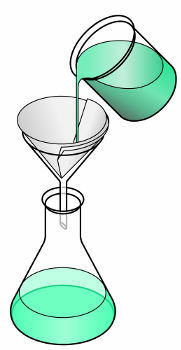filtration is a method of separating substances present in a heterogeneous mixture (has two or more phases) which has at least two components in physical states different, like:
One component in solid state and one in liquid state. An example of a mixture with this characteristic is water with sand.
One component in solid state and one in gaseous state. An example of this type of mixture is dusty air.
The filtration is very used in various activities directly or indirectly related to the our day to day. See some examples:
Water filtration in domestic filters;
Coffee preparation;
Use of lubricating oil filter in vehicles;
Use of air filter in vehicles;
Use of filter to remove sand from oil after extraction;
Use of a vacuum cleaner, which has an air filter.
To perform the filtration method in a laboratory, usually the following equipment is used:
Filter paper: performs the filtration because it manages to retain the solid material present in the mixture.

Claw: used to support the funnel.
Glass funnel:
glass equipment attached to the universal support by the claw on which the filter paper is positioned.

Universal support: used as a support for the claw.

Beaker: used to receive the liquid (filtered) present in the mixture;
Drumstick: is a glass instrument used to direct the drop of liquid onto the filter paper;

Another alternative to perform a filtration, simply attach the glass funnel, with the filter paper adapted to it, in the Erlenmeyer flask, as can be seen in the illustration below:

Glass funnel attached to the Erlenmeyer flask
To understand how a filtration works, let's use as an example a mixture composed of water and sand. There are usually the following steps:
Step 1: with the help of the stick, we pour the mixture onto the filter paper positioned inside the glass funnel;
Step 2: immediately the water begins to pass through the filter paper and falls into the beaker;
Step 3: Finally, all the sand is retained on the filter paper and the water in the beaker.

Schematic representation of the filtration process
By Me. Diogo Lopes Dias
Source: Brazil School - https://brasilescola.uol.com.br/o-que-e/quimica/o-que-e-filtracao.htm
